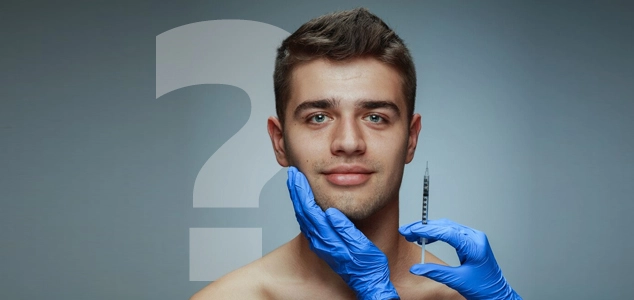Table of Contents
Botox is known for its clear and effective results, and to maximize its effectiveness for a long period, one should consider post-Botox precautions. At Syra Aesthetics, Dr. Syra Hanif, with years of experience in the field of cosmetic treatments, offers comprehensive guidance on what to do after Botox, helping you enhance the results for a longer period of time.
What To Do After Botox?
So if you are interested in getting Botox or have gotten it recently – there is a list of DOs and DON’Ts that need to be considered to maximize the results for a longer duration.
The DOs After Getting Botox
1) Applying ICE is Ok:
Many individuals may encounter swelling and discomfort around the injection sites post-Botox treatment. To fet rif of these symptoms safely, applying a cold compress to the treated areas can be quite beneficial.
It’s important not to exert pressure on the cold compress; instead, gently lay it on the swelling. While slight bruising and swelling are typical side effects that typically subside within 48 hours, it’s crucial to avoid taking NSAIDs or applying heat to the swollen areas as it may worsen discomfort and potentially lead to migration of the injected substance. This practice is strongly discouraged.
2) Face Exercise:
Approximately an hour after Botox treatment, engage in facial muscle exercises such as frowning, squinting, smiling, and raising your eyebrows for 30 seconds. Repeating these exercises multiple times throughout the day helps with the penetration of Botox solution into the targeted muscles. However, it’s important to note that exercising your face isn’t mandatory to achieve excellent results with Botox. While moving facial muscles and following recommended exercises may accelerate the reduction of wrinkles and fine lines by 1 day. Although it’s not a compulsory practice.
The DON’Ts After Botox
1) Avoid Exercise
Engaging in strenuous activities like using Ellipticals or Nordic Tracks should be avoided for at least 24 hours after receiving Botox injections. While gentle activities like leisure walks are fine, rigorous exercises can increase the heart rate and blood flow, potentially spreading Botox to unintended areas and diminishing its effectiveness. Furthermore, heavy exercises post-treatment heightens the risk of swelling and bruising around the injection sites.
2) Avoid Lying Down
Lying down or bending over after Botox for more than a few minutes can cause the dispersal of the Botox solution from its targeted site. For individuals who’re prone to easy bruising, sitting upright can aid in minimizing bruising by preventing excessive blood flow to the face.3) Avoid Alcohol Before and After Botox
Avoid alcohol or other drinks that contain ethanol, a compound known to dilate blood vessels and elevate blood pressure. This dilation facilitates a more rapid flow of blood throughout the body, which can potentially worsen the swelling and bruising in and around injection sites. To ensure optimal Botox aftercare, it’s advisable to abstain from alcohol consumption for 48 hours both before and after undergoing Botox treatment.
4) Avoid Other Cosmetics
Using liquid foundation, blush, face powder, eyeshadow, and eyebrow pencil can stimulate the skin sufficiently to potentially disperse Botox to non-targeted areas. Even individuals receiving Botox injections for medical purposes should refrain from applying pressure to injection sites and the surrounding skin. However, it is safe to apply cosmetics the day after treatment.
5) Avoid Heat
After receiving Botox injections, it’s advisable to steer clear of direct sun exposure for the remainder of the day. Heat, including from hot showers, can increase the blood pressure and encourage bruising. To minimize the risk of migration caused by sunlight and heat, it’s best to avoid sun exposure for one to two days if feasible. Additionally, refrain from using tanning beds, saunas, and hot tubs for at least 24 hours. When venturing back into the sun, ensure to apply a high-quality sunscreen for protection.
6) Sleep on Your Back
On the first night following your Botox treatment, try to sleep on your back whenever possible to alleviate pressure on facial muscles. If your injections are targeted on forehead wrinkles or brow furrowing, this concern may not apply. However, if your Botox treatment focuses on addressing crow’s feet, which are typically located on or near the sides of the face, consider the potential pressure when sleeping on your side. To prevent turning over during sleep, try positioning pillows alongside your body for support.
Conclusion
These are the general guidelines for Botox care. To learn more about pre and post Botox care consult with Dr. Syra Hanif at Syra Aesthetics, in NYC. Book your appointment today with Dr. Syra and get premium Botox treatment.

-
About The Author
Dr. Syra Hanif M.D.Board Certified Primary Care Physician
Dr. Hanif is the Director of Aesthetic Medicine. She is a board-certified physician in Aesthetic Medicine who specializes in using non-surgical alternatives in order to enhance one's appearance through Botox and fillers.
Read More


